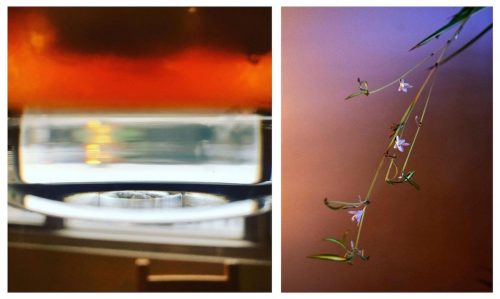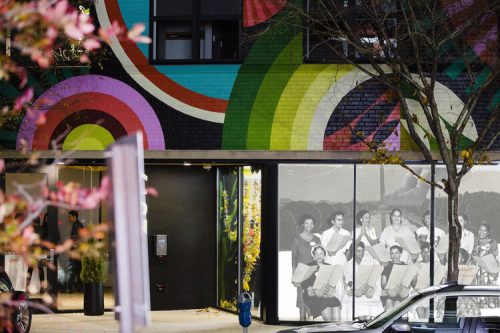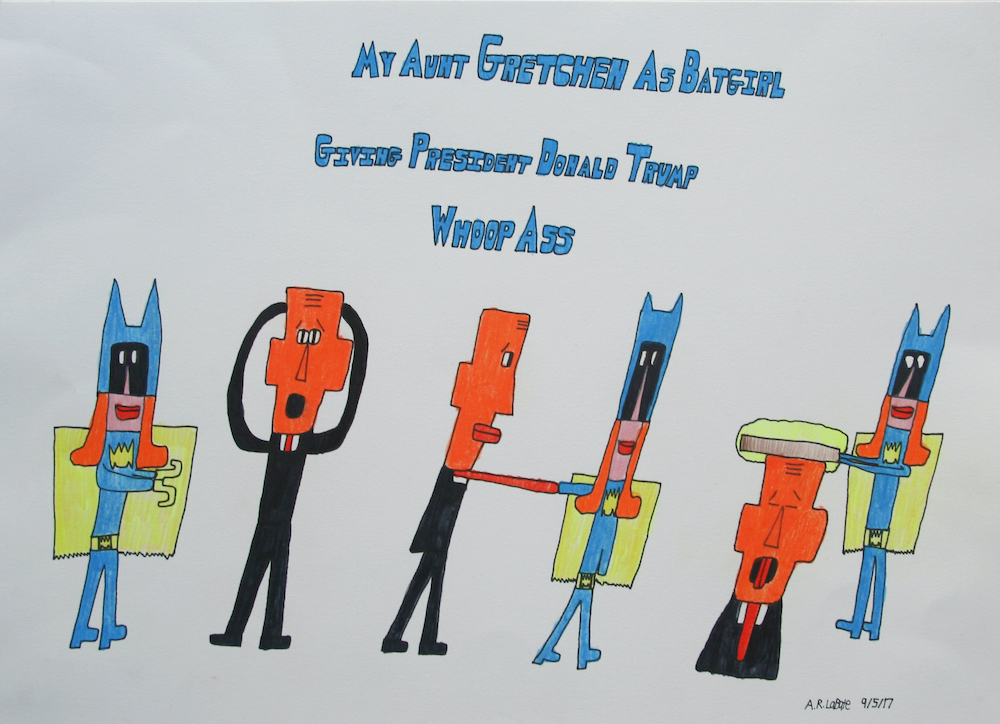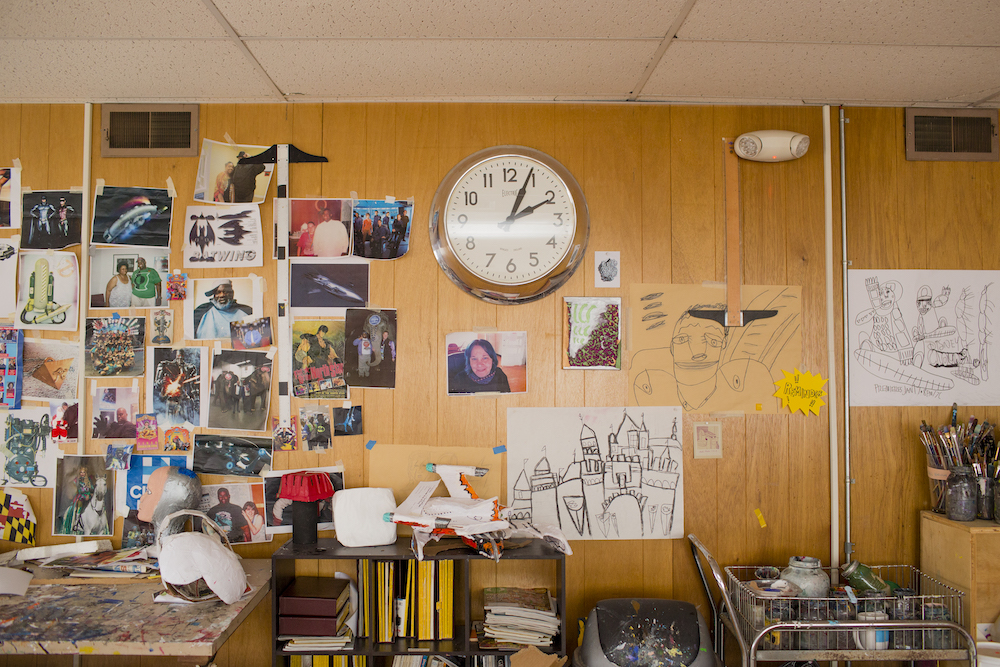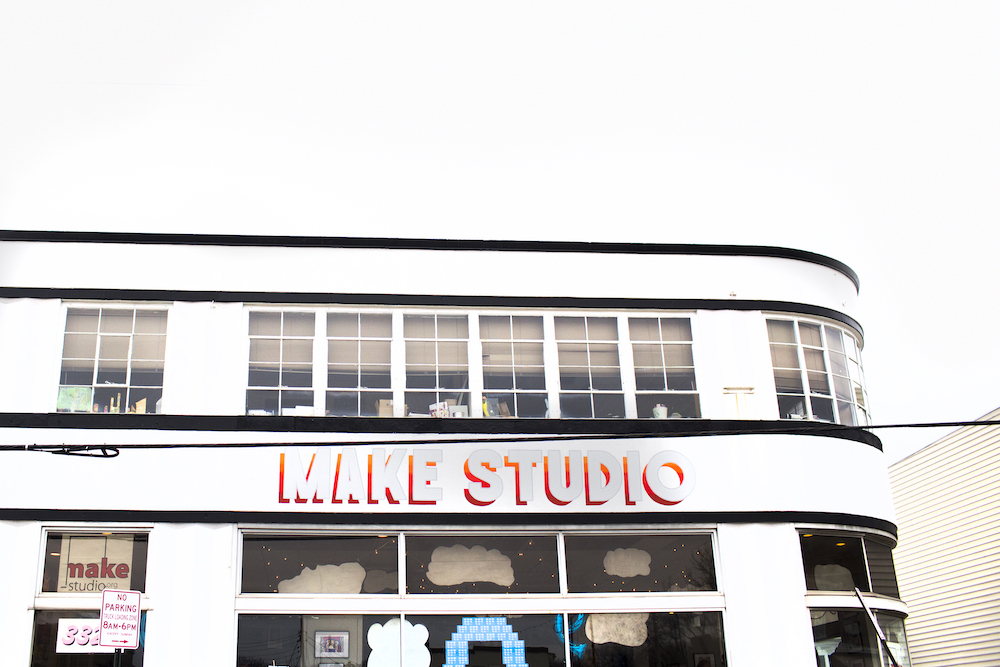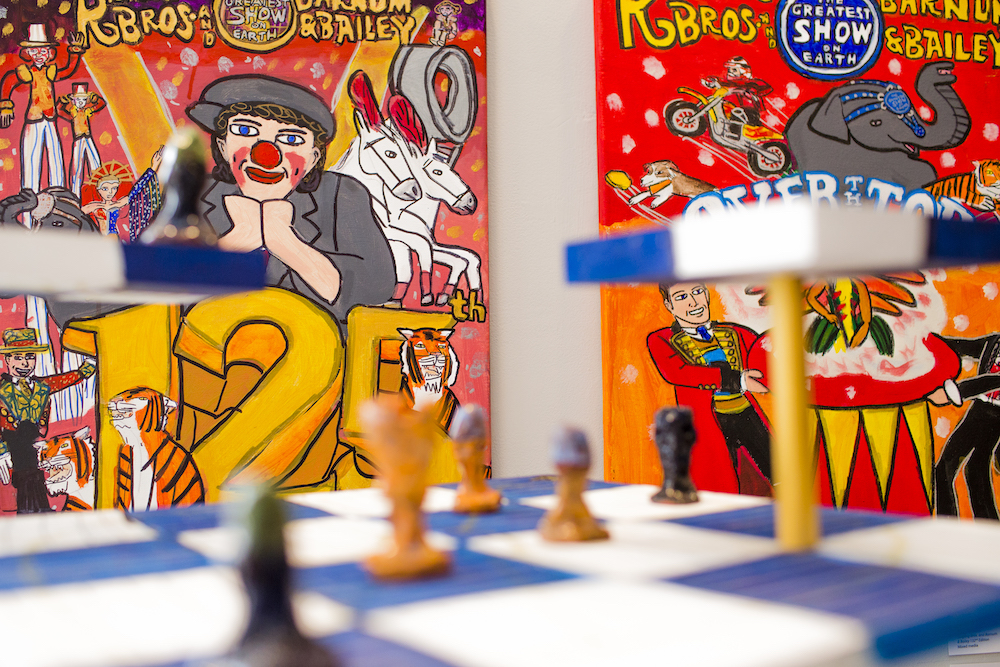Jules Hinmon never goes a day without making his signature cardboard cutouts at Make Studio in Hampden. He takes a piece of cardboard, cuts out a character’s general shape, then fills in the details with marker and paint. He makes other work on paper, too, using watercolor, marker, or “anything to get the creative juices flowing,” he says, but these characters are his bread and butter. Varying in size and appealing to an array of buyers, Hinmon’s gestural interpretations of Shrek, the Powerpuff Girls, Charlie Brown, Sonic the Hedgehog, and others of his own creation are highly sellable.
On a late-winter morning, Hinmon made about five within an hour. “Fulfilled,” he says when asked how he feels making these cutouts, putting the finishing touches on a Pokemon. “It’s a new form of art, you know, I always like to try new things—they’re my toys of sorts.”
At Make Studio, artists are free to experiment as much as they want while honing their practice. For ten years, Make Studio has carved out studio space for artists with developmental disabilities. The strength of that artwork has helped Make Studio grow over the last decade, and the artists’ ever-increasing visibility (from Make’s partnerships with other galleries, shops, hotels, and festivals) has allowed them to sell more work—hundreds over the last decade, totaling about $120,000 and counting.

